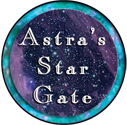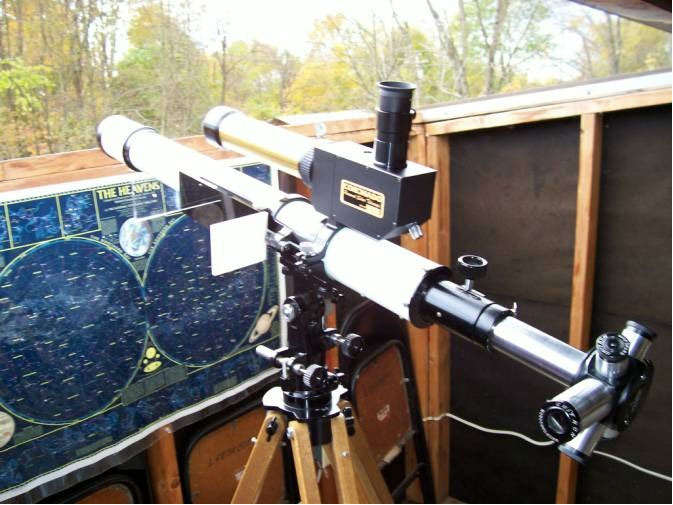

Solar Observing
Ron Leeseburg
Introduction
This article of the What's Up? almanac produced by Ron Leeseburg has some solar observing advice that holds true today. I will add some comments . . - Astra
This page is under construction and is not yet active at the Gate !
As it becomes more difficult to find a truly dark site for night time astronomy, especially in urban areas, some of us have turned to the study of our Sun.
This month (July 2011) we will discuss some methods of visual solar astronomy. The two regions of the Sun available for visual study by amateurs are the PHOTOSPHERE and the CHROMOSPHERE.
NOTE: I CANNOT STRESS ENOUGH THE IMPORTANCE OF PROPER EYE PROTECTION WHEN VIEWING THE SUN! ONE SLIP AND YOU COULD SEE "SUN SPOTS" (CAUSED BY NEARLY INSTANTANEOUS EYE DAMAGE) FOR THE REST OF YOUR LIFE!!
The Photosphere is usually regarded as the "surface" of the Sun whose most prominent features are SUNSPOTS. These are the relatively cooler regions of the Sun's surface that appear through the PROPERLY FILTERED telescope as "holes". It is appropriate to use one of the commercially available glass or plastic full aperture filters to cover the objective of your telescope.
NEVER USE THE EYEPIECE FILTER SUPPLIED WITH SOME OLDER TELESCOPES! THE INTENSE HEAT GENERATED BY ALLOWING SUN LIGHT TO PASS, UNFILTERED, THROUGH THE TELESCOPE COULD EASILY CRACK AN EYEPIECE FILTER CAUSING INSTANT PARTIAL BLINDNESS!
Most commercial aperture filters pass only one thousandth of one percent of visible solar light while filtering out the IR (InfraRed) and UV (UltraViolet) radiation.
A special telescope, Coronado's PST (Personal Solar Telescope), is now available at a fairly reasonable price to us "impecunious enthusiasts". Since this telescope is mostly filter, it needs no further filtration for safe viewing. The PST filters out all of the sun's light except for a very narrow band of red light at a wavelength of 6563 angstroms. (About 500,000 human hairs would be one angstroms wide!) This telescope allows amateurs to see the sun anytime it is in the sky as it would appear during a very rare total solar eclipse. The PST shows the sun's chromosphere, which is the sun's "atmosphere", that region above the photosphere that allows us to see Prominences, Arches and Spicules.
- Note: These telescopes are still being made today. It is being called the The world's most popular telescope to observe the Sun by vendors.
- - Astra

The image above shows the portable setup I use when give solar programs. The white telescope gives a view of the Photosphere while the piggyback gold telescope gives a view of the Chromosphere.
Note the absence of a telescopic finder (safety feature) and the presence of a sun finder (on the left side of the white telescope) that allows me to track the sun while standing with my back to the sun. Most of my public program presentation telescopes use manual tracking because many folks, when viewing, tend to grasp the telescope's eyepiece, which often defeats the tracking motors in an automated system. When that happens the system must be realigned which takes too much time to be practical. This photo was taken in my east central Ohio roll- roof observatory.
There are other optical techniques available to the amateur astronomer for solar observations. One is spectroscopy, which we will discuss next month.